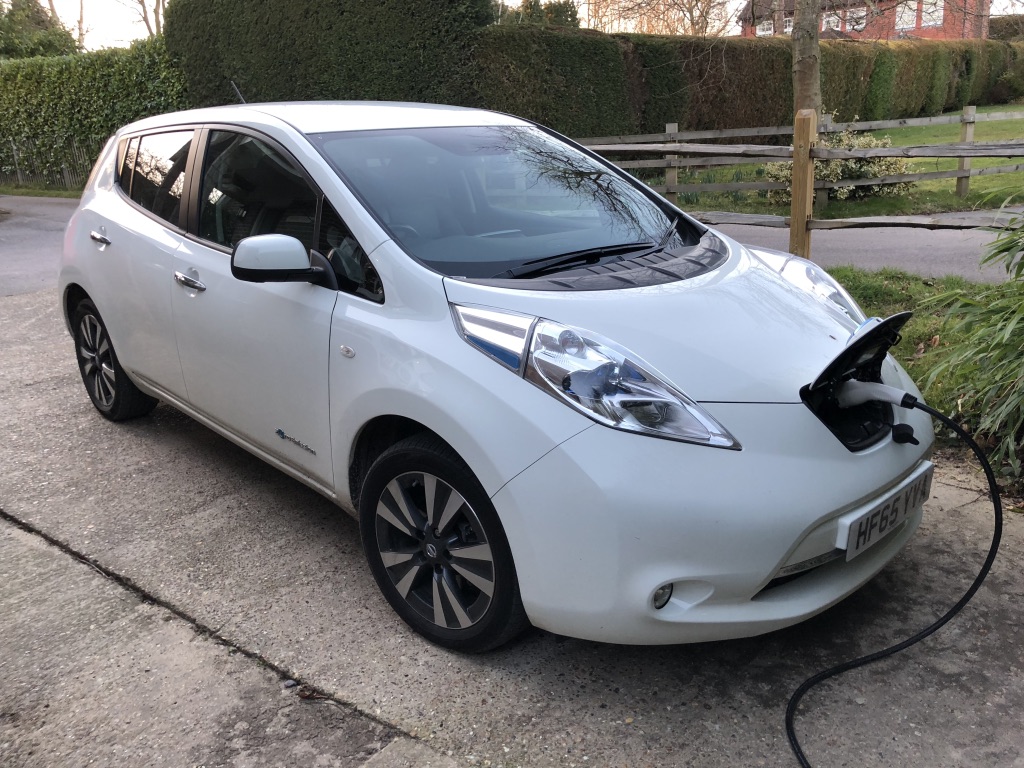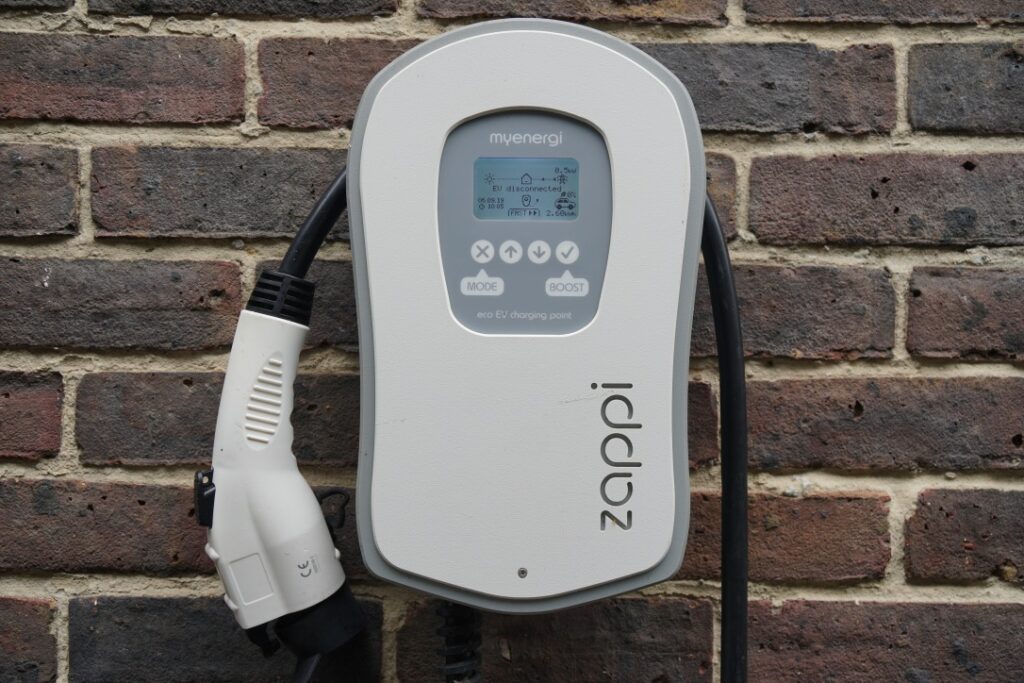People talk such rubbish about electric cars.
The batteries don’t last…they must be slow… they are expensive….mwah, mwah, mwah
All bullshit.
While most motorists have come to accept they are the future, what they don’t realise is for many people the future has already arrived. There are in fact plenty of great electric cars available today for free.
Let me show you how.
First of all, let me say electric cars are not for everyone. Not yet. For starters you really need off-street parking in order to charge the car at home. Without that ability they are impractical. And not many second-hand electric cars would suit the average user as their only car – the range is simply not good enough. But for most families that require two cars and already have one capable of long distances, they make sense. When bought second-hand and kept long enough the low running costs save more than the purchase price, making the car effectively ‘free’.
But it is not just money that persuaded us to go electric. Or even the fact they are nicer to drive than conventional cars. It was the environmental impact of driving fossil fuelled cars. The feeling of driving silently through town knowing you are not contributing to local air pollution is magical. In fact, starting a conventional car now feels akin to an act of vandalism. Be warned – after feeling this you simply will not want to go back to a normal petrol or diesel car.
Running Costs
My top-of-the-range Nissan Leaf Tekna was picked up at auction for £11,684 at 2½-years-old with 16,000 miles. It has electric everything, leather seats, 360 degree parking cameras (very clever). It even has a phone app to preheat (or cool) the cabin remotely (network charge is free for the life of the car). No more de-icing the car on winter mornings!
At current electricity prices, this car is costing us about 3 pence per mile in electricity and about 0.2 pence in servicing* (it only requires a filter for the cabin ventilation). My Toyota Verso costs about 15.5 pence in fuel and 2.5 pence per mile in servicing costs. So, each mile displaced by the Leaf is equal to approximately a 15 pence saving on what is already about the cheapest diesel motoring you can find (I have written off all depreciation for this car some years ago). So in 78,000 miles the fuel and servicing saved will have paid for the Leaf making it effectively a free car.
But it is far better than that because we need a second car in any case. A fairer comparison would be against buying a new or second-hand similarly sized car. The Bullmeister has already established buying a new car with PCP contract is an expensive and foolish thing to do. So, there will be none of that nonsense for this comparison. Instead we’ll measure the costs against a second-hand Ford Focus.
Now, of course, the Ford Focus is a more capable car and can travel across whole continents due to its huge range but remember we are comparing their use here as a second car for short local journeys less than 90 miles. We use the old diesel car for the intra-country stuff.
Below is a table of approximate costs to run the cars for 10 years and 100,000 miles. I’m assuming the cars have little resale value at the end although they should still be perfectly serviceable. Particularly so the Leaf as there will always be a market for a cheap electric car. If only to drive to the train station each morning.
| Ford Focus 1.5 TDCI Titanium (bought 3 year-old, 30,000 miles) | Nissan Leaf Tekna 24kWh (bought 3 year-old, 30,000 miles) | |
|---|---|---|
| Purchase | £10,000 | £12,000 |
| Insurance | £2,000 | £2,000 |
| Servicing | £3,500 | £400* |
| Tyres | £600 | £600 |
| MOT | £550 | £550 |
| Road Tax | £200 | £0 |
| Fuel (100k miles) | £14,000 | £3,000 |
| Total | £30,850 | £18,550 |
I’ve not included in these calculations the opportunity costs (what we could have done with the money had we not bought a car). In fact the Leaf comes out so far ahead, even when including opportunity costs compounded at 7% a year, buying it very nearly beats in cost terms being given a Ford Focus for free. Against the paid-for Focus the Leaf beats it dead.
The Ford Focus is known for its fine handling and is reasonably reliable and cheap to service. But it is not as nice and smooth as the Leaf and it is certainly not going to be as reliable. However, neither car, if well maintained, will ever drop below the expected reliability of a brand new Range Rover, or similar crap. Even after 13 years.
Both cars should have no problems adding another 100,000 miles. Doubts about the longevity of Leaf batteries have all been proven unfounded. In April 2016, Nissan estimated that fewer than 5 batteries are replaced per year worldwide; about 0.012% of all Leafs since introduction. There are many examples with 150,000 miles on the clock suffering only a 15% decline in battery capacity. As a potential issue it can be ignored.
There is the small extra cost of having a charge point installed but the very best ones are only about £800 and you get a government grant of £500 in the UK toward the cost. And let’s face it, you know you are going to need one eventually anyway. May as well get one now while the grant is still available.
There is one more large saving to consider. We have an old Toyota Verso for longer journeys like the annual trip to France, or whenever we need to tow something (the Leaf is not type approved for towing). It now gets used so infrequently we will never wear it out. It will almost certainly be the last car with an internal combustion engine we own. I’m not remotely interested in replacing it with just another equally obsolete internal combustion engined (ICE) car. Even a hybrid seems like a poor interim solution to a fully electric long-range car. The only new car that tempts me is a Tesla. So, we are unlikely to buy another conventional car. If we ever have to, I will be tempted to buy a 10-year-old S-Class Mercedes as a last hurrah to old style cars. After all, the expensive running costs won’t matter when we would be doing so few miles in it and they will be giving these things away in auction in the near future. They nearly are already.
In short, the Nissan Leaf is nicer to drive, cheaper to run and own, and more environmentally friendly than your present car.
So, why are you still driving a polluting dinosaur that is hitting your pocket so hard?
The Bullmeister
* Waving my trusty Bullshit-Meter™ over the expensive recommended Nissan Leaf service schedule established it was bullshit. It amounts to paying someone to check nothing has fallen off the car – there is nothing to service on an electric car! You do not need to change the brake fluid every other year or 20,000 miles as Nissan suggests. And particularly not on a car with regenerative braking where the discs can last 100,000+ miles! The only point of getting a service done is to benefit from the included roadside assistance.

